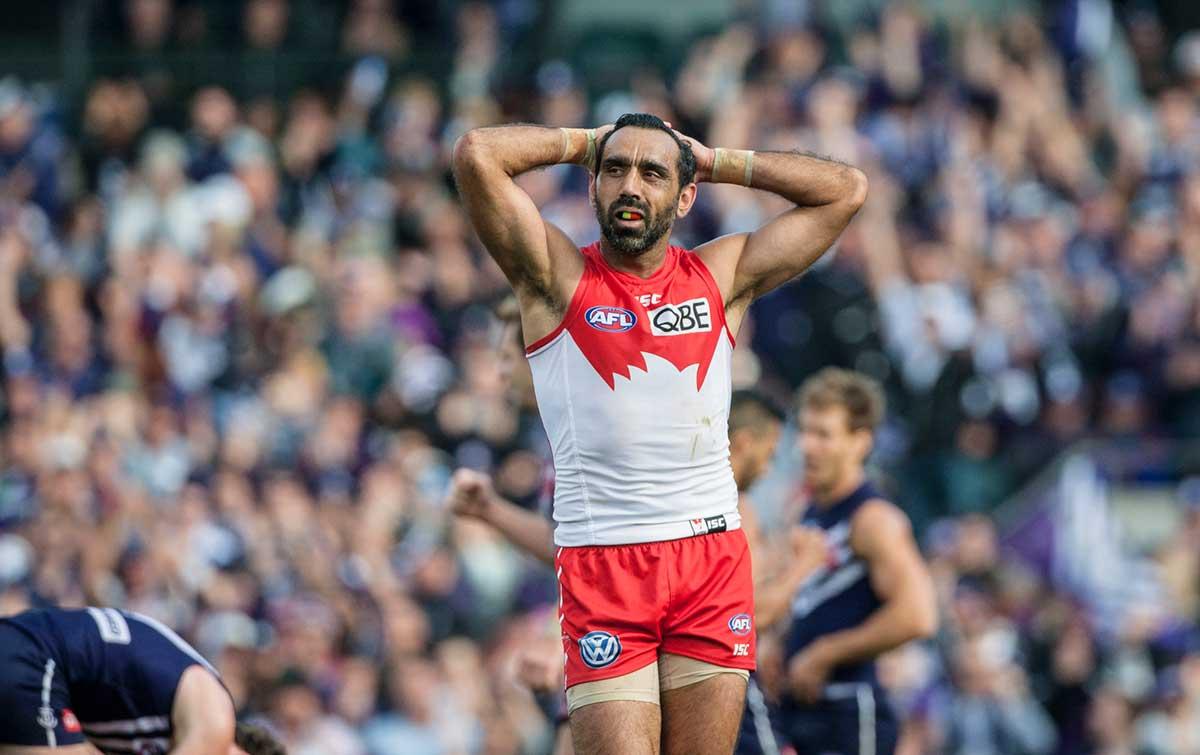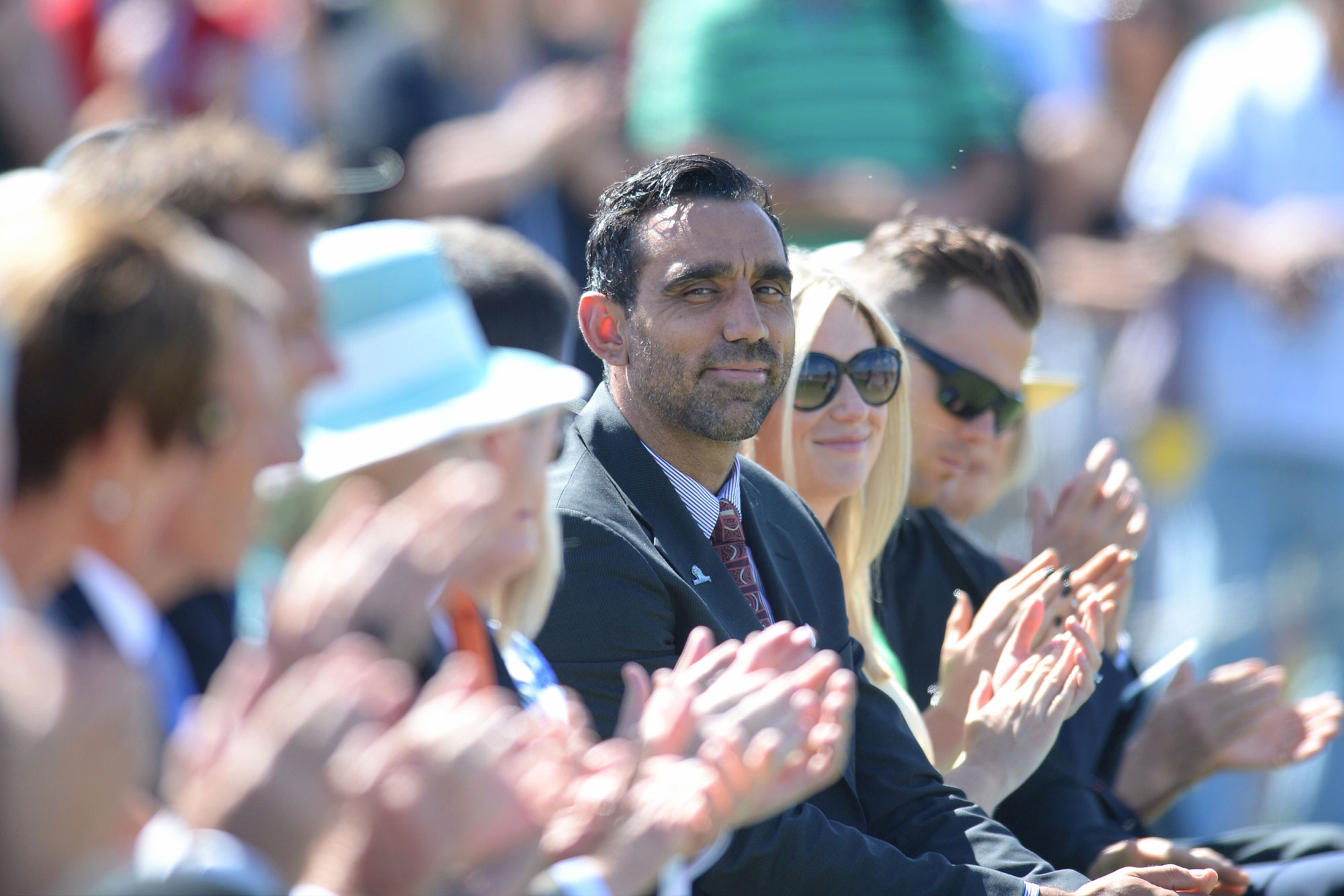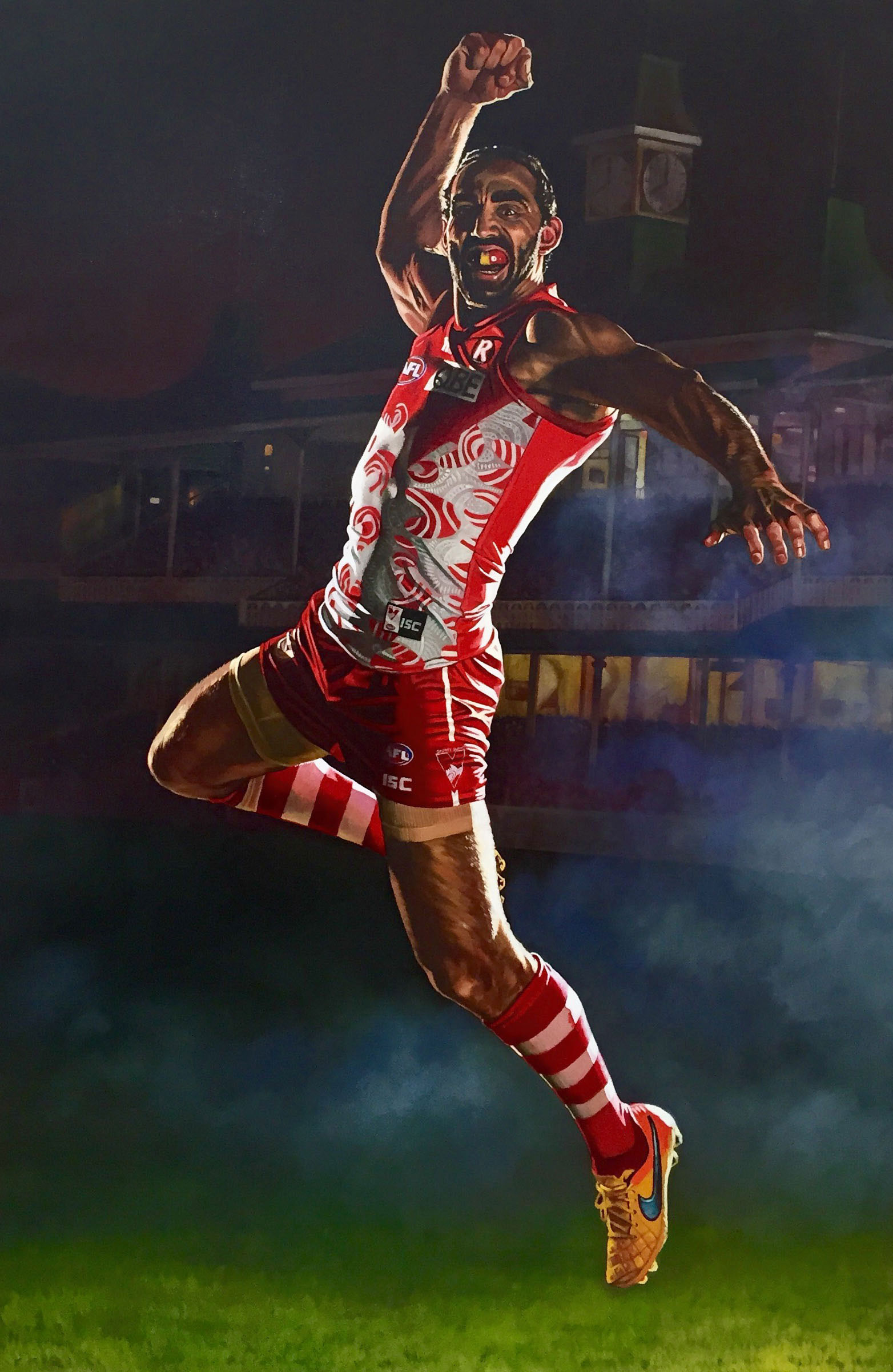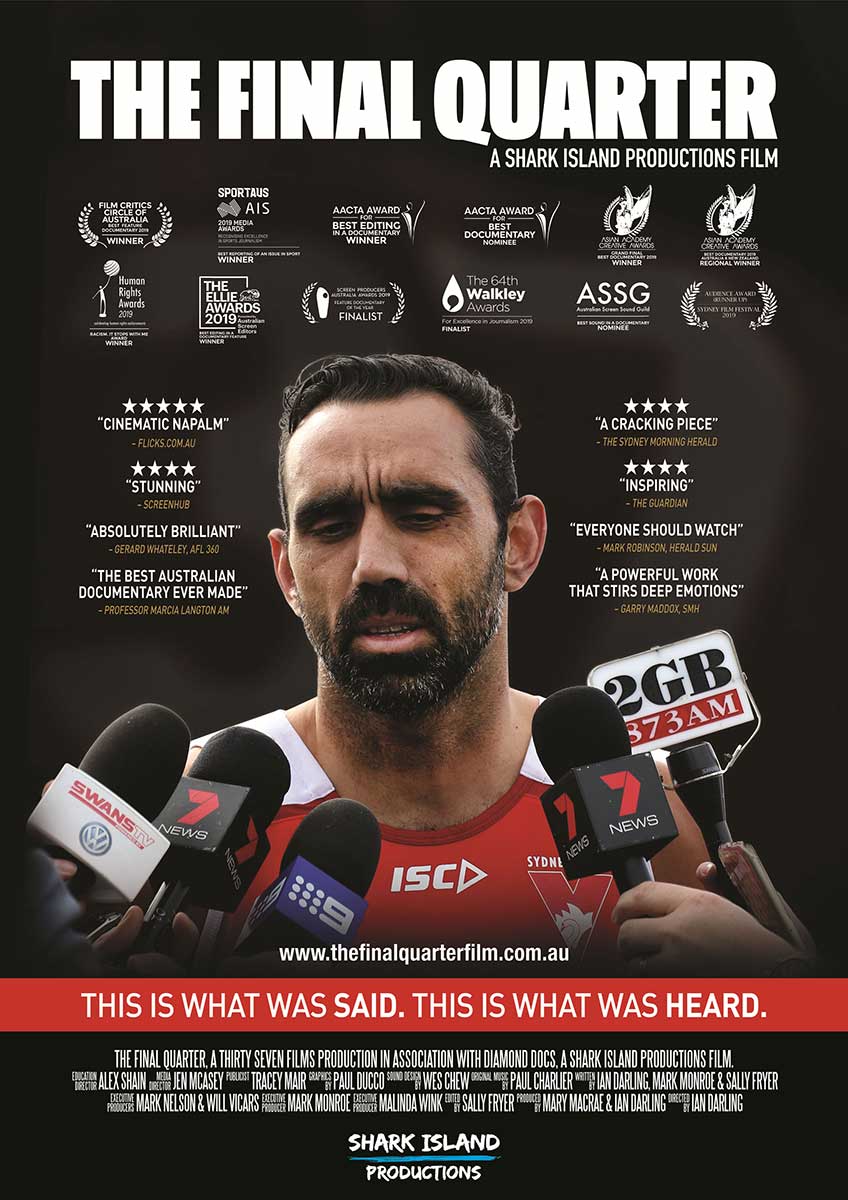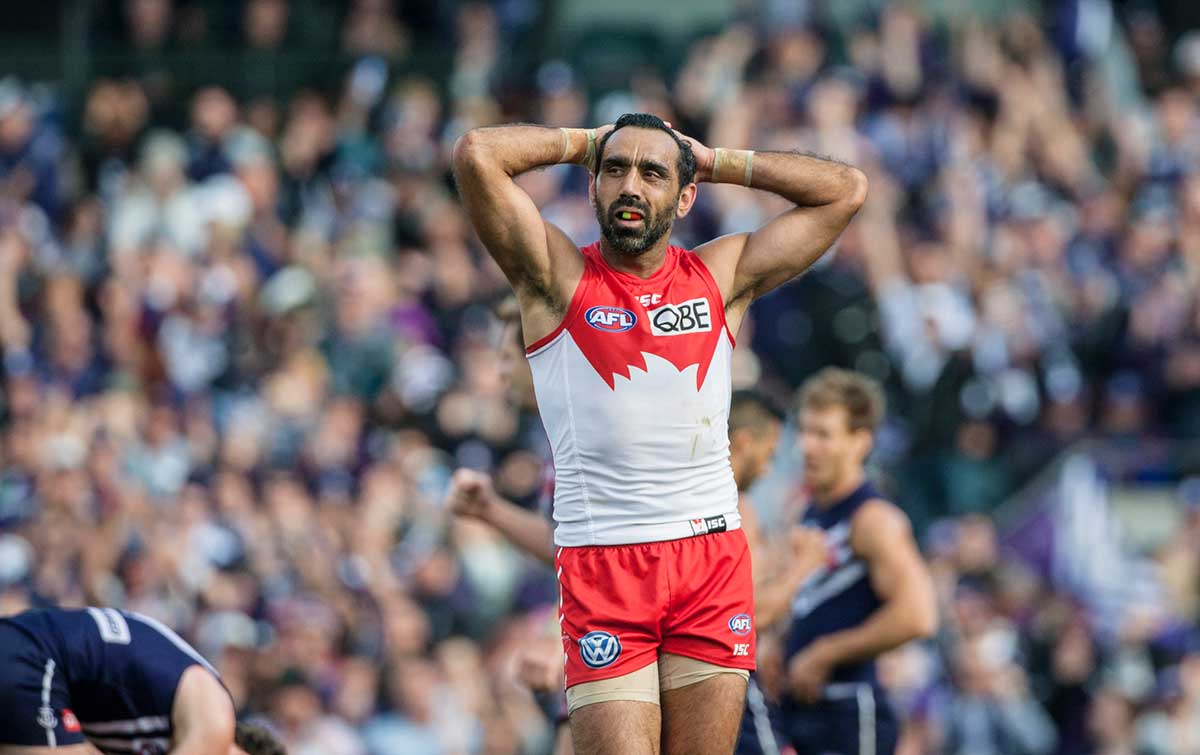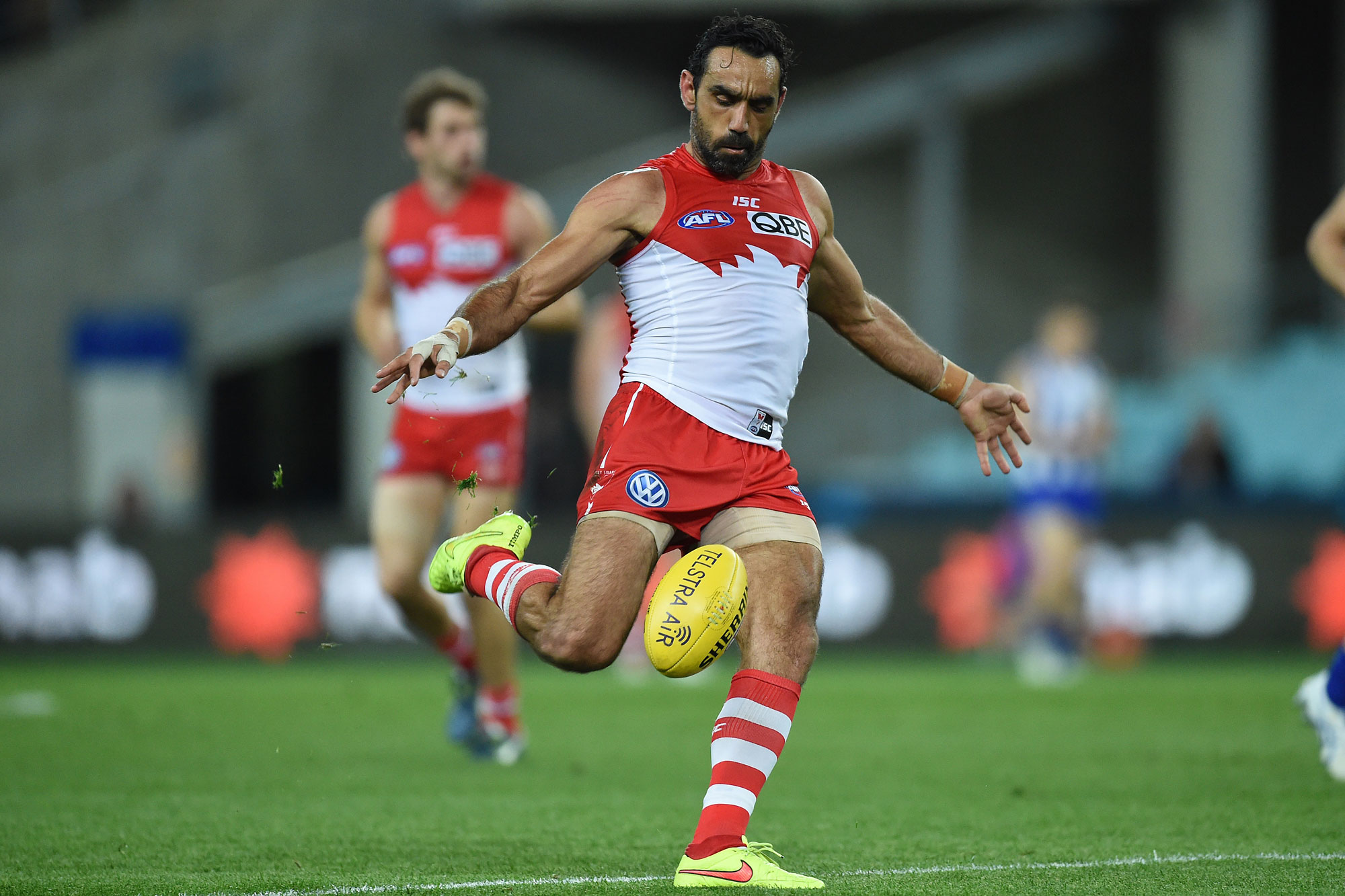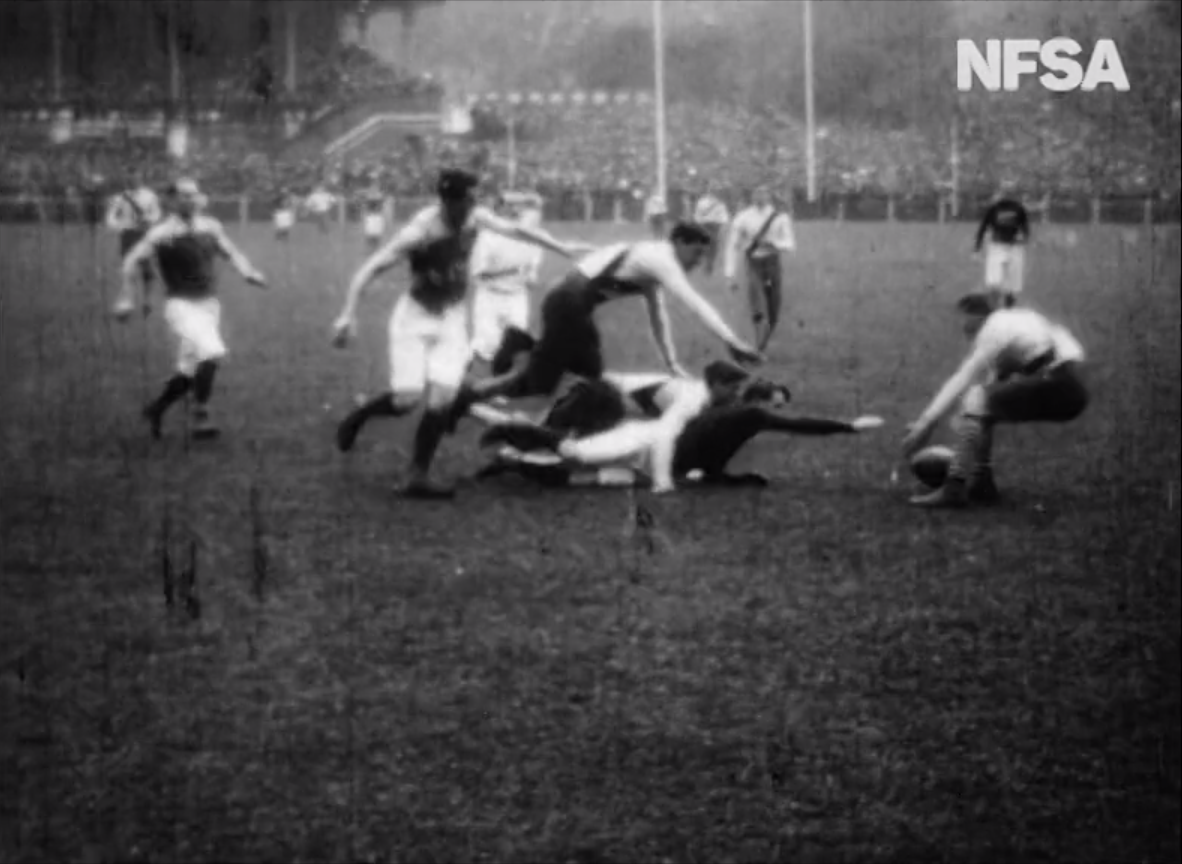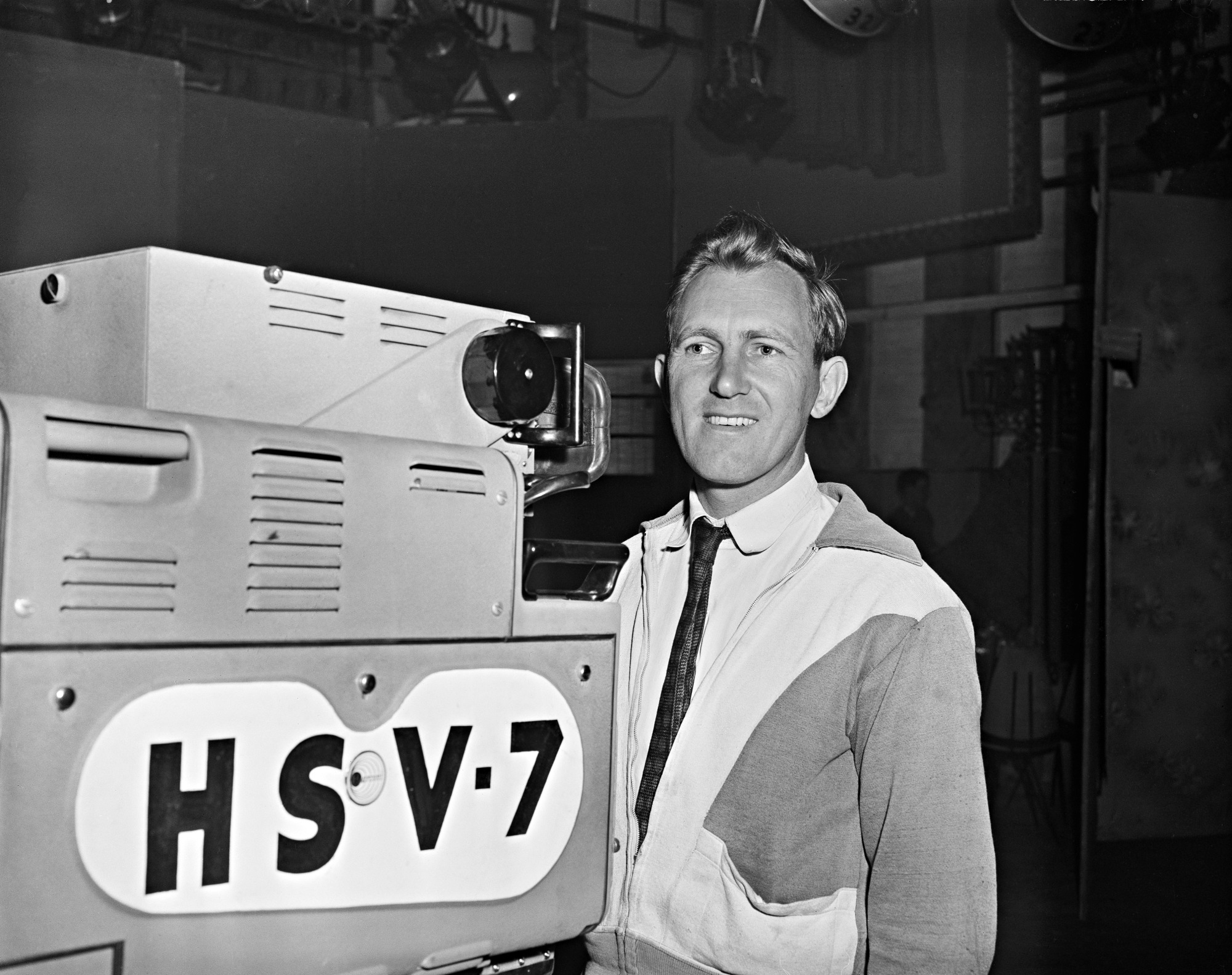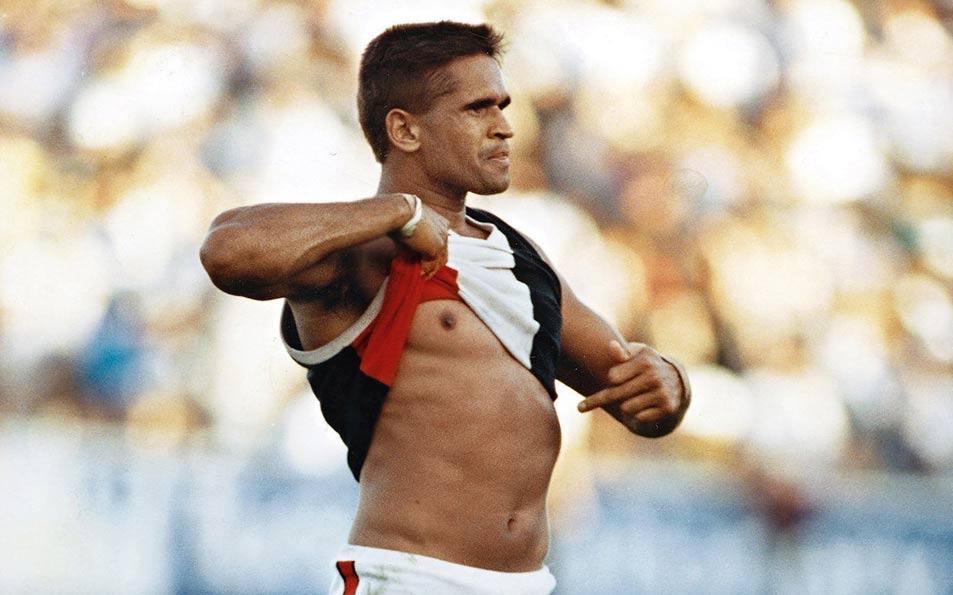‘I decided to stand up’
2019: Australian Football League (AFL) apologises to Adam Goodes
‘I decided to stand up’
2019: Australian Football League (AFL) apologises to Adam Goodes
In a snapshot
Adnyamathanha and Narungga man Adam Goodes is a former Australian Rules football player who played for the Sydney Swans. In 2013, Goodes took a strong stand against racism after being racially vilified by a fan of an opposing team during a game.
Between 2013 and 2015, he remained the target of criticism and racially driven provocation by fans of opposing teams, and also faced national scrutiny through the media. Goodes retired from playing football in 2015, largely because of this sustained hostility.
In 2019 the AFL and its 18 clubs apologised to Goodes for failing to support him adequately in this period.
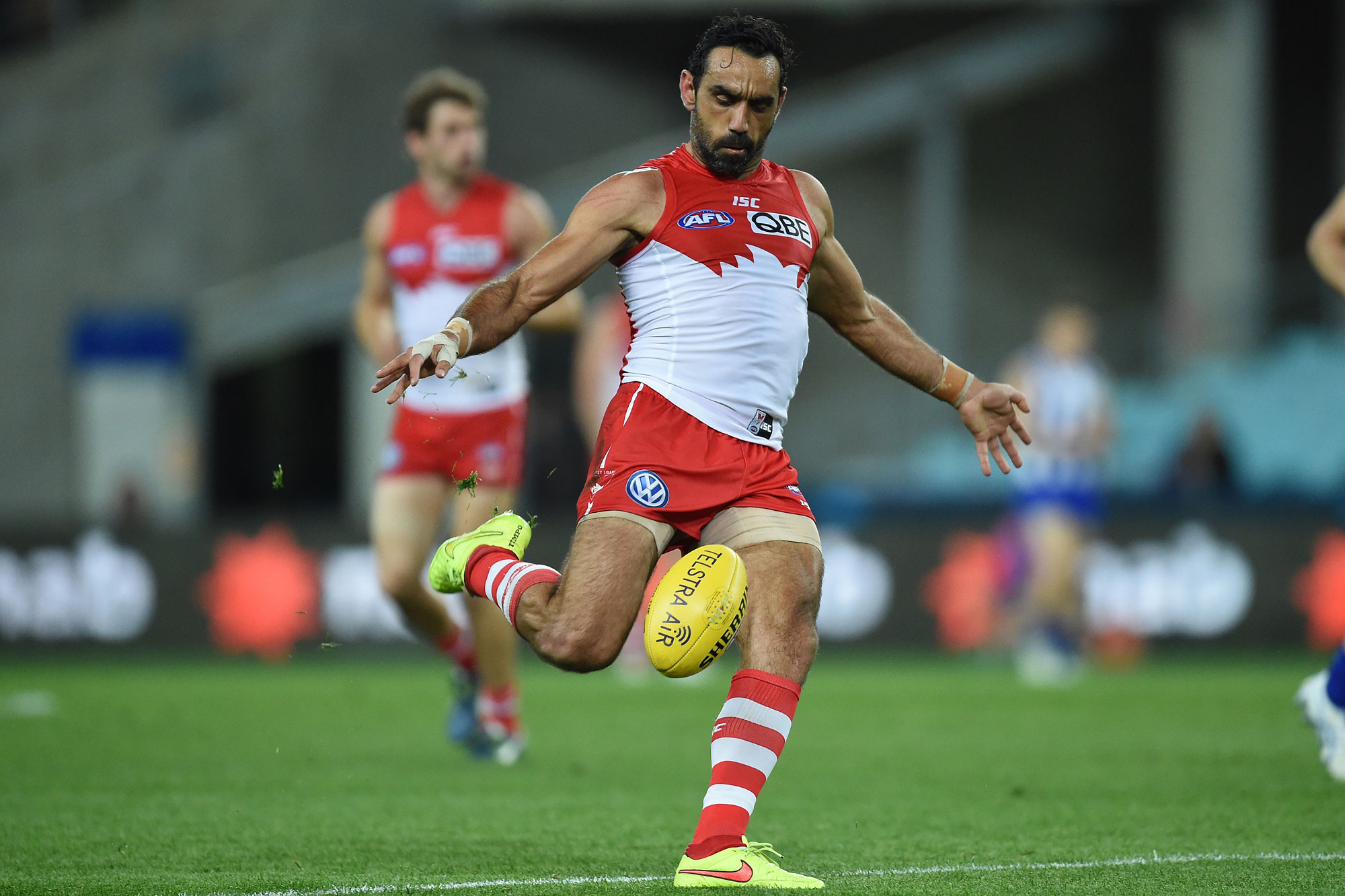
 Can you find out?
Can you find out?
1. What is Rule 30 and why was it introduced by the AFL in 1995?
2. Why did Adam Goodes retire from the AFL?
3. Goodes retired in 2015. How many years later did the AFL apologise to Goodes?
Who is Adam Goodes?
Adam Goodes was born in 1980 and played for the Sydney Swans for his whole career from 1999 to 2015. He won two premierships with the team, in 2005 and 2012, and twice won the game’s Brownlow Medal for the best and fairest player in the league (2003 and 2006). He was a tough, competitive and skilful player.
Goodes is proud of his Adnyamathanha and Narungga heritage. He was brought up by his mother, who was a member of the Stolen Generations. She was taken from her family when she was five and never saw her parents again.

What is the history of racism against Aboriginal players in Australian football?
The AFL has long played host to skilled First Nations players, but its history is marred by instances of racial vilification , perpetrated by fans and players alike.
In 1993 Collingwood fans racially abused Noongar man and St Kilda star player, Nicky Winmar by. He responded by lifting his shirt and pointing with pride to his dark skin. Many supported Winmar, but others argued that abusing players to unsettle them was part of the game.
In 1995 the AFL added a new rule, Rule 30, banning players from using racial or religious abuse against each other.
Since 2007 the AFL has held the Sir Doug Nicholls Round (known as the Indigenous Round from 2007 to 2015) , in recognition of the contributions made by First Nations players, officials, communities and cultures to Australian football.
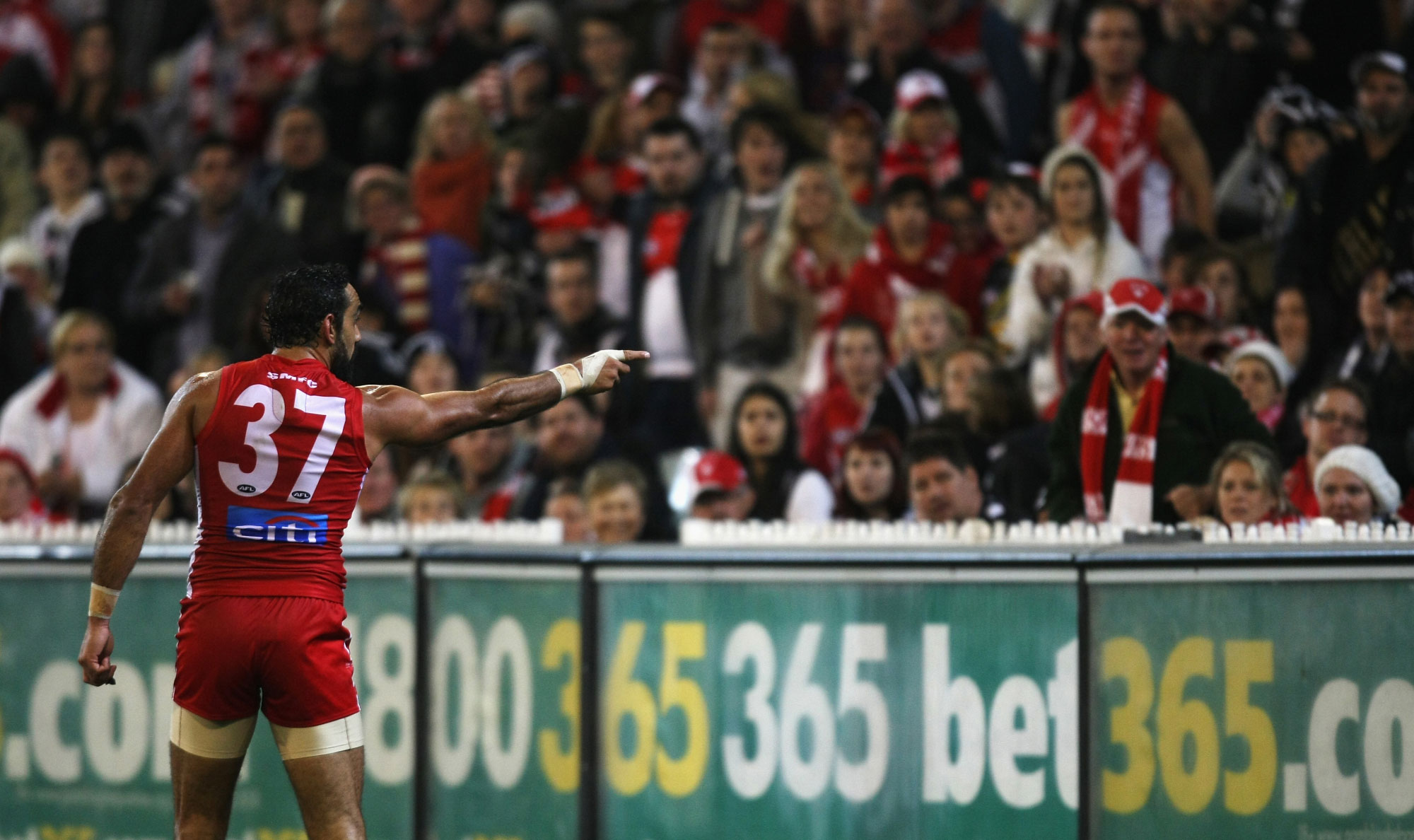
What was the Collingwood incident?
In 2013 in the first match of the Indigenous round, the Swans were playing Collingwood. Near the end of the game, a 13-year-old Collingwood fan yelled at Goodes calling him an ‘ape’ (a racist insult). Goodes called security officers who removed the girl from the ground. Collingwood officials apologised to Goodes after the game and the AFL supported him.
But some people attacked Goodes. Conservative commentator Andrew Bolt said Goodes had taken ‘outsized offence at the rudeness of a girl’. Some of the public agreed and Goodes was regularly booed by some members of the crowd at games from then on.
The girl rang Goodes to apologise. Goodes later said that, while being called ‘monkey’ or ‘ape’ was ‘shattering’ he did not blame the girl herself: ‘it’s what she hears, in the environment she’s grown up in, that has made her think that it is OK’. Goodes called for the girl to be supported and identified the need for society to be better educated.
Research task
In 1993 AFL player Nicky Winmar also experienced racism on the field. What similarities and differences are there between Winmar's and Goodes’ experiences?
‘I felt like I was in high school again, being bullied, being called all these names because of my appearance. I didn’t stand up for myself in high school—I’m a lot more confident, I’m a lot more proud about who I am, and my culture, and I decided to stand up last night, and I’ll continue to stand up.’
What happened when Goodes was made Australian of the Year?
Goodes was chosen as Australian of the Year for 2014. Prime Minister Tony Abbott said that Goodes stood ‘for decency in national life’. Goodes took the opportunity to speak out against racism in Australia and later said, ‘If people only remember me for my football, I’ve failed in life’.
Yet many members of the public interpreted his speech as an attack. Some fans continued to boo him.
What was the war cry dance?
At the same time Goodes was engaging more with his ancestral culture. Long before the AFL accepted the idea, he had believed that Australian Rules football may have been influenced by Aboriginal games such as marngrook, which was played by the Kulin people around Melbourne.
In the 2015 Sir Doug Nicholls Round (then known as the Indigenous Round) game against Carlton at the SCG, Goodes performed what was described as an ‘Aboriginal war cry dance’ to celebrate a goal. At the end of the dance, he mimed throwing a spear at the Carlton fans.
According to Goodes, players on both sides ‘loved it’. But some people reacted angrily.
Research task
Research the Aboriginal game marngrook. In what ways is this sport similar to AFL?
Why did Goodes retire?
After the war dance incident, fans booed Goodes at every match. The AFL clubs tried to stop this negative behaviour, and many fans and public figures stood up for him. Despite this, booing continued and by the end of the season Goodes had had enough. He retired from the game.
In 2019 two documentaries about Goodes were released: The Final Quarter and The Australian Dream. Both talked about the final stages of his career and the treatment he had received.
In the same year, the AFL and its 18 clubs apologised to Goodes for failing to stand up for him and ‘call out’ the treatment he was receiving. The apology ended by saying, ‘We … never want to see the mistakes of the past repeated’.
Goodes acknowledged the apology, but he didn’t return to football. Since retiring he has devoted himself to organisations seeking to improve conditions for First Nations people.
Read a longer version of this Defining Moment on the National Museum of Australia’s website.
 What did you learn?
What did you learn?
1. What is Rule 30 and why was it introduced by the AFL in 1995?
2. Why did Adam Goodes retire from the AFL?
3. Goodes retired in 2015. How many years later did the AFL apologise to Goodes?






